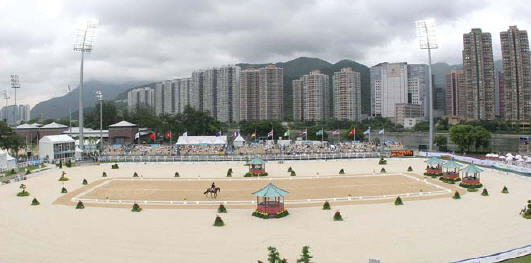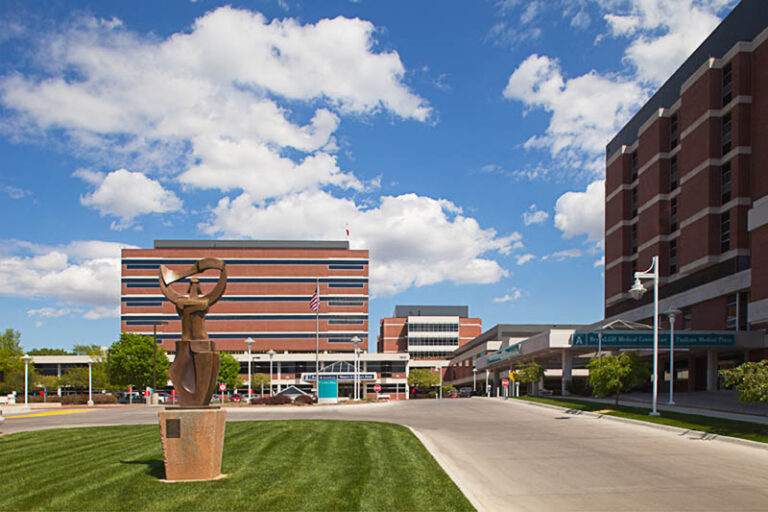Jumping High
Managing facilities at the famous Hong Kong Jockey Club, involves a large and complex estate, business critical systems and equine facilities that rival those for humans. This summer it is also the venue for the 2008 Olympic equestrian events. Jane Fenwick reports.
Jane Fenwick—May 2008
For 124 years the Hong Kong jockey club has played a central role in the life of Hong Kong providing racing up to three or four times a week, day and night at its two racecourses — Happy Valley and Sha Tin. Capacity crowds of 70,000 are regularly attracted to race meetings — that’s more than attend most Premiership football matches.
|
|
It is big business with its three different sectors generating HK$100bn a year, but as a ‘not-forprofit business’, it donates its surpluses to charitable and community projects. These donations, totaling over HK$1bn a year, make it one of the largest non-government charity and community donors anywhere in the world. Its donations make a significant difference to education, elderly care, and a range of projects across Hong Kong.
The Hong Kong Jockey Club oversees the administration of horse racing and betting in Hong Kong and is recognized as a world class operator of racing and equestrian management. Furthermore it is one of the largest land owners in Hong Kong occupying 20bn sq ft of land with a nine billion sq ft built estate. Only the Hong Kong Government estate is larger. The Jockey Club is also one of largest employers, swelling its 4,600 permanent staff to 22,000 on race days. Unlike British race tracks that hold only one or two meetings a year, the two race tracks in Hong Kong – Happy Valley on Hong Kong Island and the newer Sha Tin Racecourse built on reclaimed land in Kowloon – have to have more than one track to cope with wear and tear of one or two meetings a week. The Sha Tin race course has a total of four grass and all weather tracks and two extended straights.
In addition to the two race courses, the Hong Kong Jockey Club estate comprises 3.8m sq ft of residential property, some for its grooms, jockeys and other essential staff. Its three club houses, each 37,000sq m, provide restaurant and entertainment facilities for its 12,000 exclusive membership and their guests. (The Club is also currently building a new clubhouse facility in Beijing.) In addition, it has four riding schools, three of which are open to public use. The Hong Kong Jockey Club also operates over 100 off course betting shops. At Sha Tin a telephone betting operation is housed a vast space beneath the stand where more than 2000 operators sit on race days in booths equipped with computer and telecoms equipment taking bets from all over the world. Altogether there is a total of 4000 ‘telebetting booths’ across the Hong Kong Jockey Club estate.
Responsible for managing these, well used and highly critical estate is Graham Tier, Manager, Property Operations and Maintenance. “We house 1,200 race horses at Sha Tin, hold 78 race meetings a year at both courses. Racing turnover will exceed $1bn in 5 hours. It’s amazining business,” he said.
Tier has a core in-house team of 400 employees and 116 service contracts across the estate. Like many Hong Kong FM operations the emphasis is on self delivery of all the main FM services, but here it is also underpinned by up to date FM technology and practice. The planned preventative maintenance is managed by Maximo and help desk operators take up over 5,000 requests each month which are communicated to the maintenance operatives by PDA. The Maximo system is supported by the a Siemens BMS and linked to the CCTV and other systems vital for the business operations of the racing facilities, which Tier claims, the first fully integrated solution in Hong Kong.
Across the estate there are datacenters for the betting operations, and standby generators designed to ensure that the racing business is not halted for a moment. There are airconditioned stables, three storeys high, laboratories and operating theatres for horses. By any standards, this is large and sophisticated FM operation.
With a an energy bill topping HK$170m a year, Tier is increasingly aware of the benefits of managing energy use closely, and he has initiated a two year programme with Johnson Controls to develop baselines for each building and to work to reduce energy consumption.
|
|
About 1000 energy meters – have been installed across the Sha Tin site to measure consumption against the baselines. Now halfway through the programme, Tier is already confident of identifying savings of up to 16 per cent in some facilities. He has already seen savings of over 30 per cent from the installation of new chiller plant at Sha Tin. Although mainland China is prone to power failures and shortages, Tier says that his supplier, China Light and Power has high reliability. “We can assume 99.9 per cent availability but nevertheless there are back up generators for the race tracks. We are experts in running night racing. As a contingency, the main arena lighting has a 33 per cent feed from one 32kV supply and another 33 per cent from another supply, and another 33 per cent from generators.”
It is little wonder that the organizers of the Beijing Olympic Games 2008, when faced with building from scratch the facilities and expert support for international horses and riders for Olympic equestrian events in the city, decided to turn to the world class experts in their own backyard. Just two years ago — some five years after the bid Beijing won the bid to hold the Games – the Hong Kong Jockey Club was asked and agreed to host the equestrian events. In less than two years it has built new facilities and adapted existing ones at a cost of HK$800m. The Olympic Equestrian Company has worked with a special project team headed by Julian Wright who has project managed the construction projects, and Martin Ong who is responsible for the ‘overlay’ facilities such as temporary spectator stands, catering. It is down to Tier to maintain the venue and its operations such as lighting, maintenance and all basic building operations associated throughout the Olympic and Paralympic Games.
The existing facilities beside the Sha Tin racetrack of the Hong Kong Sports Institute have been adapted for the Olympic equestrian events. Former badminton courts have been transformed into an indoor air conditioned training arena, and the outdoor athletics track is now an 100m x 80m arena for the dressage and jumping events. This is surrounded by a grandstand building and temporary seating capable of hosting 20,000 spectators.
Altogether HKJC has provided 13 training areas for dressage and jumping comprising two general training arenas, five dressage training arenas, four jumping/dressage training arenas, one jumping arena and one indoor air conditioned training area on the site. An 800m cross country training track and schooling arena has been built in Penfold Park, a public park in the centre of Sha Tin’s racetrack.
The health and wellbeing of the horses is of prime consideration and there has been concern that hot, humid conditions in August when the Games are to be held, could stress the horses. As a result the facilities for the horses are airconditioned, a ‘first’ in the history of the Olympic Games. The purpose-built main stabling complex of over 200 stables in four stable blocks are designed to maximized light and natural ventilation, but also has air conditioning installed. The team vets can determine the temperature for each stall to ±0.5 , and the air quality conditions and security will be closely monitored. In the competition and training area cooling stations will be installed to allow the horses to cool down quickly after training or competing.
A purpose-built equine clinic will provide both diagnostic and primary treatment services during the quarantine and Games period. It has two examination rooms, a dedicated pharmacy, ten observation stables and a farrier’s workshop adjacent. The facilities also include a vetenary centre, operating theatre, recovery room and clinical laboratory. The Club’s own accredited Racing Laboratory will provide its services to test both equine and human entrants for drugs. It is one of only four laboratories accredited by the Federation Équestre Internationale (FEI), the governing body of Olympic equestrianism disciplines.
The Club will also be responsible for all the horse transportation for the Games using its fleet of 10 horse transporation floats that carry 99 horses at any one period. The cross country event will be held at the Jockey Club’s Beas River Country Club at Sheng Shui and the adjacent Hong Kong Golf Club is being transformed to take the 10m wide Olympic cross country course and training facilities. Now built and in the final stages of completion these Olympic facilities have already been tested by the British, Australian and American equestrian teams and described as among the best in the world. Compared to the normal pace of horse racing in Hong Kong, the presence of just 200 horses competing in the Games and 20,000 spectators, Tier claims will seem like a ‘quiet’ event.
What happens to the facilities after the end of the Olympic and Para Olympic Equestrian events is still in discussion. But for Tier, it will be straight back to business. “The Games takes place in the six week annual racing ‘holiday’ in HK, so all the Club’s facilities will be available. However, it is back to normal racing within days of the Olympic and Para Olympic events finishing.”






